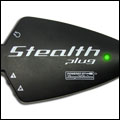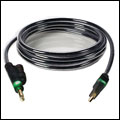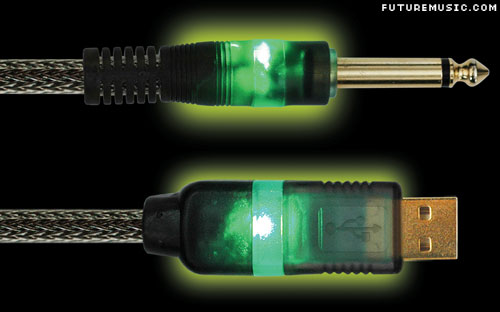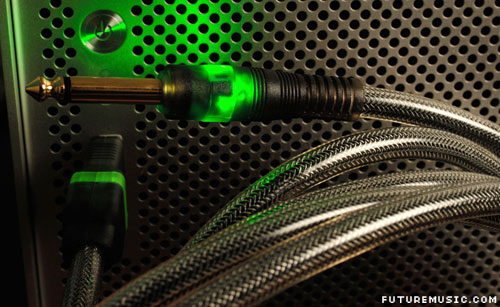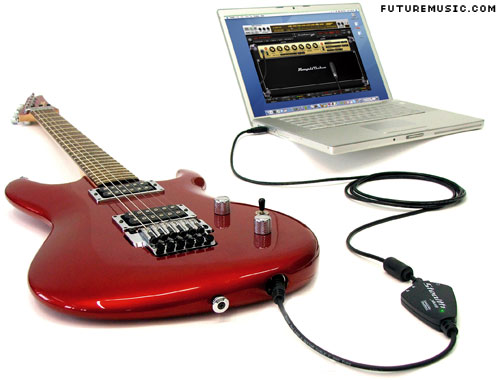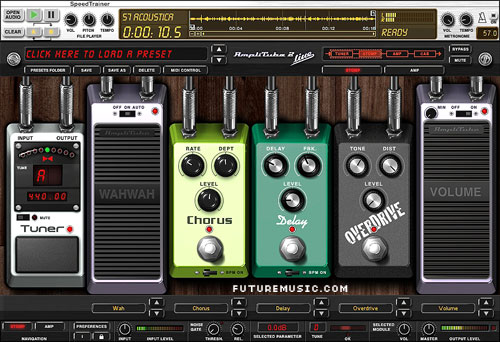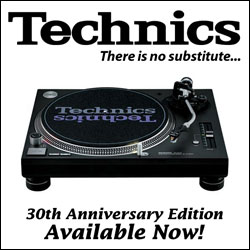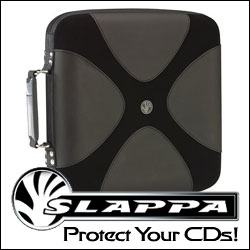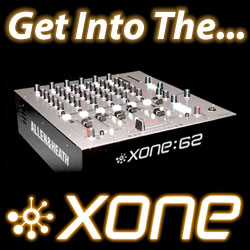|
|
|
|
|
|
|
|
|
|
|
|
|
||||||||||||||||||
|
|
|||||||||||||||||||
|
|
|
|
|
May 30, 2007 ../ Head2Head: IK's Stealth Plug VS. SoundTech's LightSnakeSeveral months ago we were contacted by SoundTech who informed us that they had a revolutionary new product called the LightSnake that they wanted to send over to us for a TestDrive. LightSnake?? As the conversation progressed, we learned that the LightSnake was a "Sound Card In A Cable." Sure! We'll bite.
We contacted SoundTech and briefed them of the problem, which apparently wasn't a surprise. Seems a "manufacturing glitch" caused a defect in the first batch from the factory, they told us to expect a fresh cable in the near future.
SoundTech's LightSnake is a handsome, robust 10' cable that looks like it can take some punishment before succumbing to the rigors of the road. Although quite bright, the lime-green LED lights at either end of the cable are not nearly as cheesy in person as they appear on the packaging and on SoundTech's website, and actually serve to communicate connection status and audio transmission. Like the Stealth Plug, the LightSnake has a 16 bit 44.1/48kHz Analog to Digital converter on board with a claimed 20 - 19.2K Hz frequency response. The LightSnake features a second ¼" female output molded into ¼" male end of the cable for sending the signal to an amp. The LightSnake includes a DVD from Sony with trial versions of most of their audio titles.
The musicians found the Stealth Plug's construction to be "flimsy" using "low quality components" that looked "budget." While the LightSnake was "built to last" with "extra insulations and shielding," and "quality construction," despite the "annoying disco lights."
The Stealth Plug and LightSnake are both plug 'n' play, class compliant USB audio devices that don't require drivers when used with Microsoft Windows 98SE or higher and Mac OS X. Evaluators on both platforms found setting up each one of the devices to be hassle free. Both worked right out of the box with little fanfare, however, one of the more animated guitarists found that the Stealth Plug's bulge "flailed around quite a bit" when he was jamming and "was a distraction." He eventually solved the problem by attaching it to his guitar strap with a twisty-tie. Ah, ingenuity!
The sound quality of both cables certainly didn't overly impress any of the reviewers, nor did it get bitter complaints. Some users described the Stealth Plug's sound as "softer and more forgiving" than the quality of the LightSnake, which was "fragile" and "slightly brittle." While others felt the LightSnake had a "wider frequency range" and was "less noisy" than the Stealth Plug. When we put the cables through the paces in our studio, our biggest issue was their overtly digitized sound. The Stealth Plug doesn't have the visceral output that the LightSnake does and that does mask the limited frequency range that we experienced when testing the cable with a six string bass. On the other hand, the LightSnake was quite crunchy on the top end and never reached the claimed 20 kHz low end. The bottom line is for what these cables cost and their intended market, the sound quality is reasonable.
The latency problems really put things into perspective for a couple of guitarists who instantly reduced the cables to just "a great way to rapidly get an idea from your head onto your hard drive." However, one of the guitarists was remorseful about the problem, "as much as I was digging AmpliTube, my laptop just didn't have enough hamsters on the treadmill to combat the latency...giving me a brain freeze." To solve the latency problems the sole electronic percussionist, gave up monitoring through software effects and experimented with inserting preamps, effects, pedals and seemingly everything else he could find between his instruments and the cables. "The LightSnake has a solid +20 dB signal boost that worked great through my old vintage pedal collection, but the Stealth always needed a preamp." The percussionist did find the Stealth Plug's headphone monitoring to be an asset, especially when he "wanted to promptly lay down a beat for future reference."
The LightSnake retails for $69 ($39 Street) and blows the Stealth Plug out of the water with its sturdy form-factor, but doesn't provide any worthwhile software to allow the guitarist to get the most out of the purchase. The biting sound quality is passable for quickly getting inspiration down on your hard drive, but if you're serious about your playing then stepping up to one of the many excellent, yet economical, portable A/D solutions on the market is going to make a much bigger impact on your development as a player and composer. Vocalists should note that SoundTech does make a Mic to USB LightSnake. While we didn't test this model, for $69 dollars it is a great way to instantly record a great hook or song idea.
The Future: IK needs to focus on the quality of the actual cable, reducing the
profile of the Stealth bulge, and improving the sound quality. Our Technology Editor, actually took apart the bulge, and discovered many things that
IK could do to reduce the size and enhance the technology. IK is a sharp outfit and probably knows exactly what to do to make this work. With their
ever-expanding guitar effects line-up, spending the time, effort and resources to make the Stealth Plug the best it can be, is a worthwhile investment. IK Multimedia's Stealth Plug is available for $129 and SoundTech's LightSnake retails for $69 from authorized dealers worldwide. More information on IK Multimedia's Stealth Plug and SoundTech's LightSnake.
Copyright © 2007 Futuremusic® All Rights Reserved. |
|
|
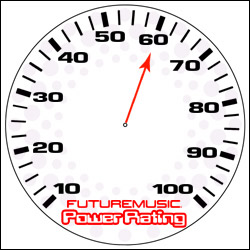 Both the IK Multimedia Stealth Plug and the SoundTech LightSnake score a unexceptional 60% PowerRating. The Sound Card In A Cable concept has potential, but needs to address some serious deficits to be a viable product category.
News Archives
|
|
|
|
|
|
|
|
|
|
|
|
|





